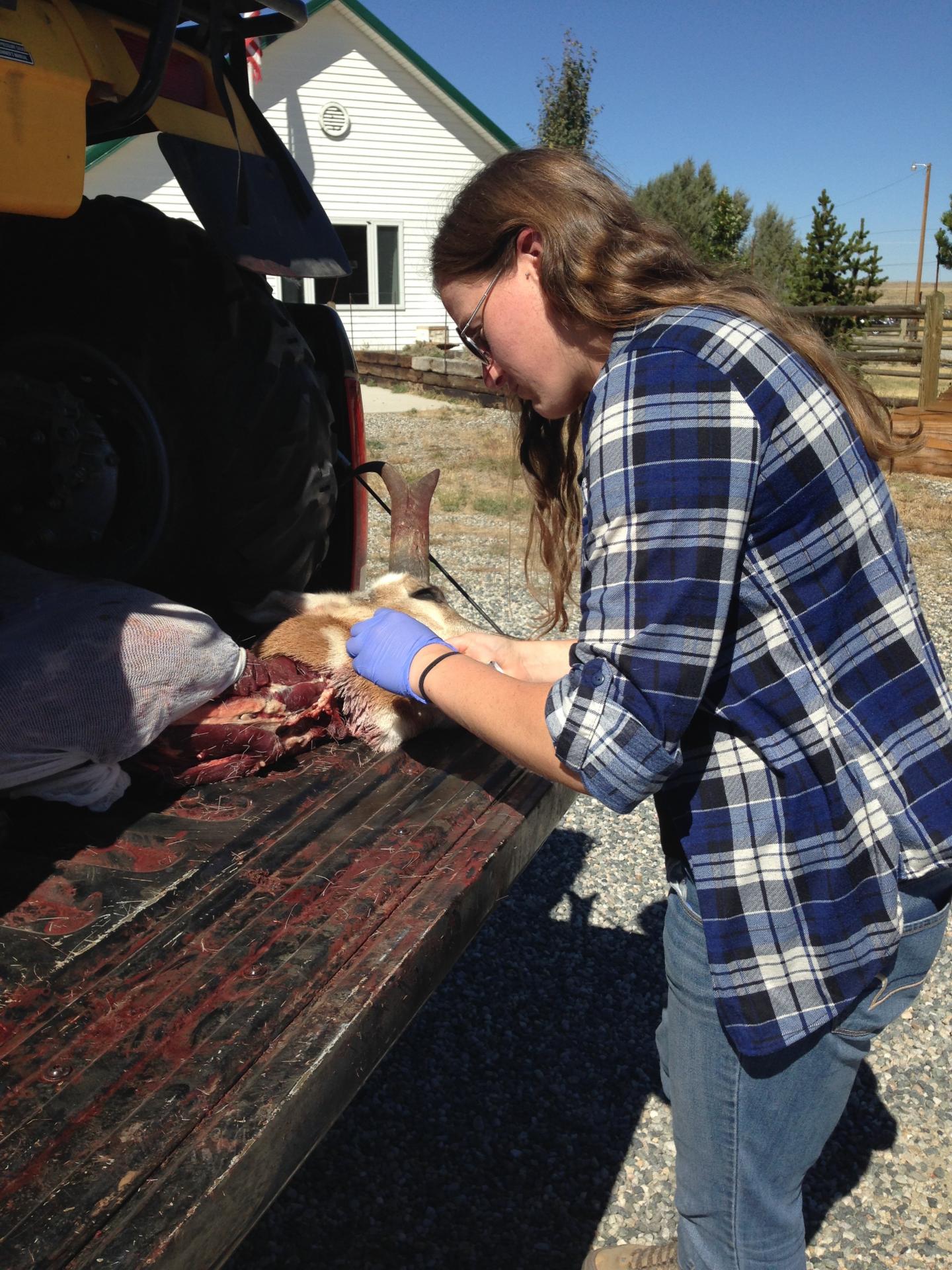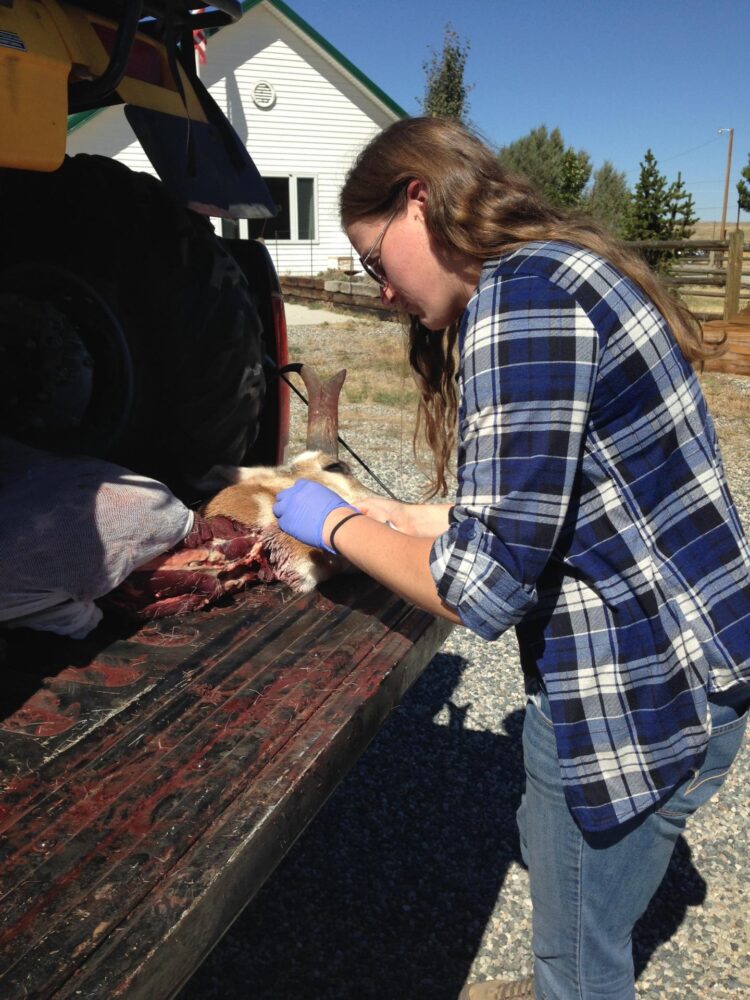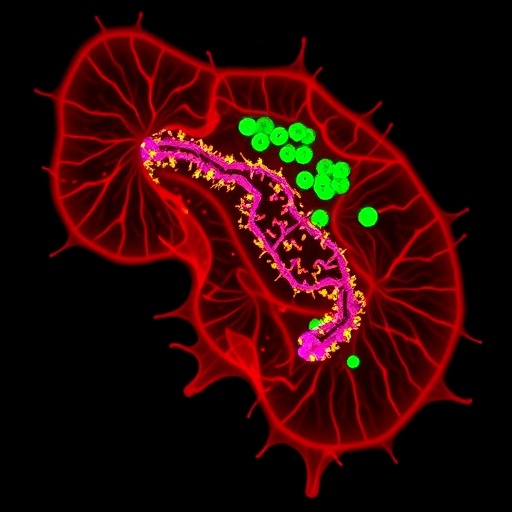
Credit: Adele Reinking
A University of Wyoming researcher led a study that showed Wyoming pronghorn exhibit little-to-no population genetic differentiation even though their range spans hundreds of kilometers, multiple mountain ranges and three major interstate highways.
While there are previously documented studies that show landscape features such as major highways restrict the daily and seasonal movements of pronghorn and increase mortality risk, Melanie LaCava says her research group found little, if any, evidence that these barriers affect genetic connectivity among Wyoming pronghorn.
“While there is ample evidence from previous research that pronghorn behavior is severely impacted by highways, roads, fencing and other forms of human development, there also is evidence that pronghorn exhibit flexible social and migratory behavior,” says LaCava, a UW Ph.D. candidate in the Program in Ecology, from San Diego, Calif.
Pronghorn live in social groups. However, they do not necessarily stay in the same groups forever. Unlike some other Wyoming ungulates that live in social groups with animals to which they are related, pronghorn social structure is much more flexible, LaCava says. Seasonal migration behavior in pronghorn also is more flexible than other ungulates: Some pronghorn migrate every year; some migrate when they need to; and some stay residents in one area year-round.
“These flexible behaviors may lead to a lot of dispersal across the state, which could explain our findings of low genetic differentiation in Wyoming pronghorn,” LaCava says.
LaCava was the lead author of a paper, titled “Pronghorn Population Genomics Show Connectivity in the Core of Their Range,” that was published May 29 in the online version of the Journal of Mammalogy, an international scientific journal that promotes interest in mammals throughout the world. Papers published focus on mammalian behavior, conservation, ecology, genetics, morphology, physiology and taxonomy.
Holly Ernest, a UW professor of wildlife genomics and disease ecology, and the Wyoming Excellence Chair in Disease Ecology in the Department of Veterinary Sciences and the Program in Ecology, was the paper’s senior and corresponding author. When Ernest moved her lab from the University of California-Davis to UW in August 2014, pronghorn was one of the species she was very excited to research for statewide genomic health. She then recruited LaCava as the lead Ph.D. student to work on the project.
Other contributors to the paper were Sierra Love Stowell, affiliated with Ernest’s lab and a UW postdoctoral researcher from 2016-18; Roderick Gagne, a research scientist at Colorado State University and a UW postdoctoral researcher from 2015-17; Kyle Gustafson, an assistant professor of evolutionary ecology at Arkansas State University; Alex Buerkle, a UW professor of botany; and Lee Knox, a senior wildlife biologist at the Wyoming Game and Fish Department.
Wyoming is home to roughly half of North America’s pronghorn population, which stands at approximately 750,000. The state continues to remain a stronghold for remaining pronghorn due to the presence of preferred sagebrush and grassland habitat, and lower density of human development compared to other parts of their range.
“We used multiple lines of genetic evidence to show that Wyoming pronghorn exhibit high levels of genetic connectivity across the state, and do not yet display any signs of barriers to gene flow,” LaCava says.
The study, which included sample collection from 2014-18 and lab and data analysis from 2017-19, examined genetic data of 398 pronghorn across Wyoming, excluding Yellowstone and Grand Teton national parks. Researchers worked to equally represent male and female pronghorn to ensure that any differences in behavior between the sexes did not alter the findings.
According to the study, pronghorn at distances within 100 to 150 kilometers were slightly more genetically similar to one another than expected if the same individuals occurred at random locations.
“We were primarily interested in investigating statewide patterns of genetic connectivity to get a large-scale picture of what is going on with Wyoming pronghorn,” LaCava explains. “When we did not find much genetic differentiation at the statewide level, we zoomed in on the Interstate 80 highway corridor because previous research has shown this is a significant barrier to pronghorn movement.
“We performed a rare variant analysis on samples close to I-80 to see if the most recent genetic mutations showed evidence that the highway corridor is inhibiting gene flow,” she continues. “We found no evidence that I-80 is a genetic barrier, despite its impact on daily and seasonal behavior of pronghorn.”
Although the study found no evidence that barriers to daily and seasonal movements of pronghorn impede gene flow, the researchers suggest periodic monitoring of genetic structure and diversity as part of management strategies to identify changes in connectivity. The goal is to prevent isolation and subsequent loss of genetic diversity.
“Maintaining connectivity among pronghorn populations is essential to the long-term sustainability of healthy pronghorn populations in Wyoming and throughout their range,” LaCava says. “While we did not find any genetic evidence of barriers on the landscape, GPS tracking studies have demonstrated significant negative impacts of highways, roads, fencing and other forms of human development on the daily and seasonal behavior of pronghorn.”
LaCava says many efforts are currently ongoing to maintain and improve habitat connectivity for pronghorn and other Wyoming wildlife, such as constructing highway overpasses or removing old, unused fencing from the landscape. Continuing and expanding these efforts will help sustain healthy pronghorn populations long into the future and, hopefully, prevent negative genetic impacts to this iconic sagebrush species, she says.
###
For more information, go to http://www.
Media Contact
Holly Ernest
[email protected]
Original Source
http://www.
Related Journal Article
http://dx.





